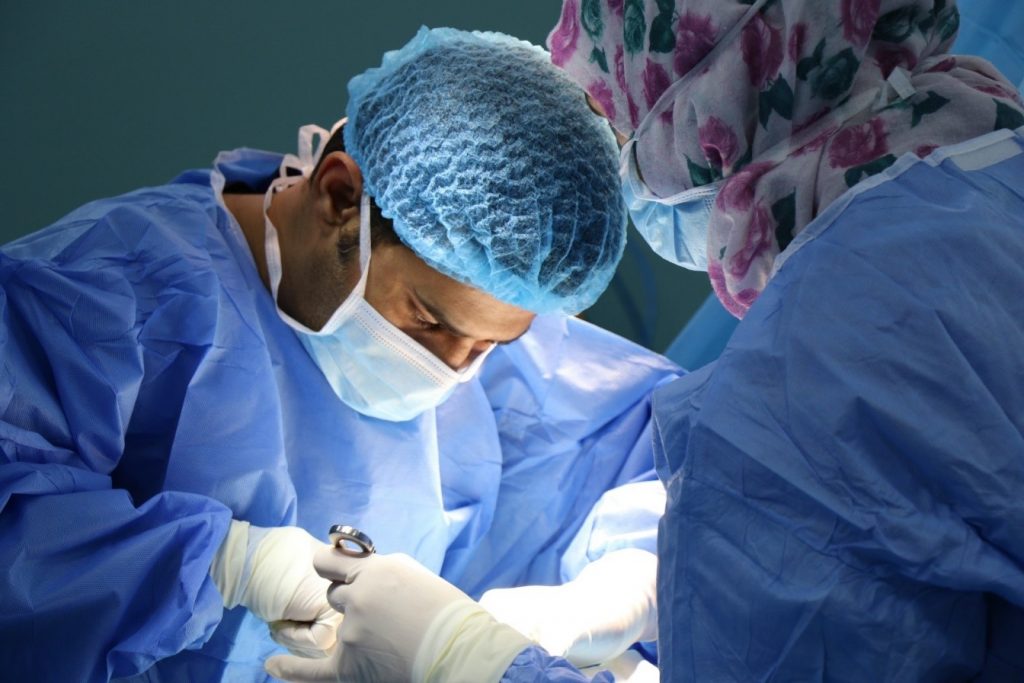Surgical lights are one of the most integral parts of the OR setup, as they enable you to have a perfect and unrestricted field of vision, no matter what time of the day or night you are performing surgery. Therefore, you need to be sure you’re making the right decision when building your setup. In aid of choosing the right medical light setup, we’re going to discuss what the key aspects of surgical lighting are one by one. Each one will have a different impact on your experience in surgery, so it’s important to pay each their due attention.
Illumination and Quality
You will need to consider the actual illumination in terms of lumens. However, contrary to popular belief, this does not mean choosing the lights with the brightest bulbs.
Before electricity was discovered in 1879, surgeons would use candles or only operate during the day in order to provide them with enough visible light to see by. However, as one would expect, mistakes occurred on account of dim days and a shoddy visual field. As the decades progressed, surgical lighting evolved to the point where there was far too much light on the surgical field, causing eye strain for the operating surgeons.
The goal of modern-day setups is to strike a balance between providing enough illumination to operate with perfect clarity, while simultaneously avoiding the trap of providing too much light and glare that can cause eye strain.
Most contemporary surgical lights use either incandescent or LED bulbs, and surgical headlamps usually vary between LED and Xenon makes. LED and Xenon lights produce light of a cooler hue and high brightness, so they are ideal for illuminating the surgical field while reducing the chance of eye strain. When you’re searching for a surgical lamp or headlamp, we would recommend LED or Xenon for their high lumen output and accommodating hues.
Cast Shadows
Cast shadows are shadows that occur when light comes from one direction into the surgical cavity, thereby obscuring the field. In order to reduce (or, ideally, entirely eliminate) the number of cast shadows in the cavity, setups with multiple light beams from different light sources are ideal.
These light beams cancel the shadows of the others out, so the light patch within the cavity is fully illuminated without any obstructions. It is, therefore, best to choose a setup with multiple fixtures (both ceiling mounted and standing) to couple with a headlamp.
Heat Management
One of the primary reasons that medical lights are now made with Xenon and LED bulbs, aside from their illumination and hue, is because they generate much less heat than the incandescent halogen bulbs that were used in older medical equipment. The reaction between the halogen gas in the bulbs and the electricity running through the tungsten filaments generated heat close to the bulb. This had a significant impact on the comfort of the surgeons, and would generate heat on the surgical site.
Heat for hours at a time at the surgical site is not an acceptable side effect for modern lighting, as it desiccates the tissue and can impact the outcome of the surgery. Thus, the cooler Xenon headlamps and even cooler LED light stands are now standard use.
Failsafe Lighting
Lastly, it’s vital to consider what happens to your lights in the event of a “single failure”. A single failure occurs when a wire breaks inside the equipment, or a power supply cable detaches; essentially, it means a failure of the light source due to one malfunction. In the case of a failure, the lights must be able to continue operating or be remedied incredibly quickly, as surgeons must be able to see clearly at all times. A few seconds of darkness in the surgical cavity can make the difference between the success and failure of an operation.
Most contemporary lighting systems have a small backup system for this very reason. However, the ideal setup would have an internal diagnosis system and be able to tell you what has gone wrong immediately, instead of having you dedicate time and energy that should be used on the patient to diagnosing the failure. An internal diagnosis system will save you valuable time, so it’s worth it to invest in lighting that has this feature.
Take the time to look around and choose the right setup for your OR – if you feel confident that everything else is accounted for in surgery, then the only thing you have to focus on is the wellbeing of your patient, and the smooth operation of your theatre.
Get in touch for advice on your best choice today.
We want the best for your patient as well – whether you’re choosing a dental light or a headlight for the OR, the choice is one that will impact on their safety and wellbeing. Contact us today for advice on which surgical light setup is best for you, and walk away feeling confident that you are receiving world-class products guaranteed to give world class results.


